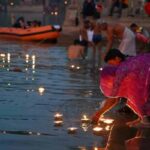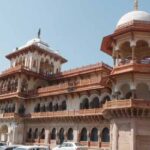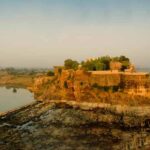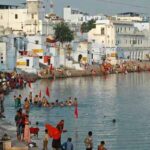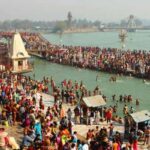Chandrabhaga festival Jhalawar is a vibrant cultural celebration held annually in Jhalawar, a historic city in the Indian state of Rajasthan. This festival is dedicated to the revered River Chandrabhaga, which holds significant religious and cultural importance in the region.
The festivities typically take place over three days during the months of October or November, coinciding with the Kartik Purnima, a full moon night according to the Hindu calendar. Pilgrims and tourists alike flock to the Chandrabhaga ghats, the riverbank, to take a ritualistic dip in the holy waters, believing it purifies their soul.
The festival is marked by various cultural events, including folk performances, traditional music, and dance forms like Kalbelia and Ghoomar, which are integral to Rajasthan’s rich heritage. Additionally, the fair showcases local crafts, handlooms, and delicious Rajasthani cuisine, offering visitors a taste of the state’s vibrant culture.
Devotees light lamps, offer prayers, and perform aarti (a ceremonial worship with fire) at the riverbank, creating a surreal and spiritually charged atmosphere. The riverbank also hosts a cattle fair, where livestock traders gather to buy and sell cattle, adding an economic dimension to the festivities.
Overall, the Chandrabhaga Festival in Jhalawar is a beautiful amalgamation of spirituality, culture, and tradition, providing a unique and enriching experience for all who attend Chandrabhaga festival Jhalawar.
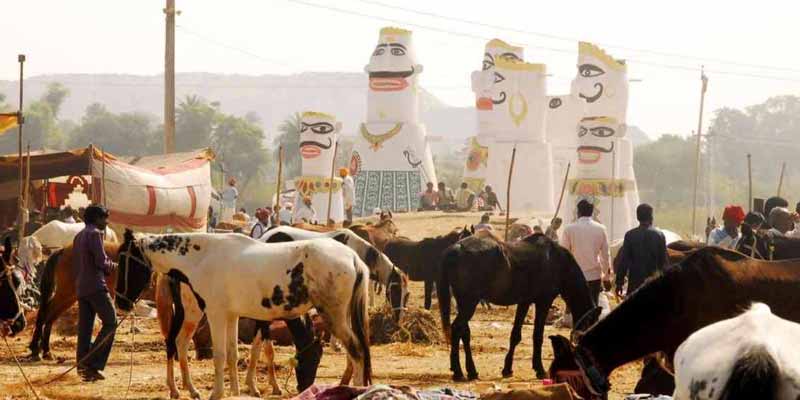
History of Chandrabhaga festival
The Chandrabhaga Festival finds its roots in the historical and cultural tapestry of Rajasthan, India. It is believed to have originated centuries ago, drawing inspiration from the deep-seated reverence for the Chandrabhaga River. The festival serves as a vibrant celebration of the region’s cultural heritage and has evolved over time to become a prominent event in the cultural calendar of Rajasthan.
The Chandrabhaga River, located near the city of Jhalawar, has held immense religious significance for the local populace. It is believed that a dip in its holy waters during the festival can purify the soul and bestow blessings. This sacred association with the river laid the foundation for the festival’s inception.
Initially, the festival likely began as a small-scale religious gathering, where devotees congregated to pay their respects to the river. Over the years, it gradually transformed into a more elaborate affair, encompassing a broader spectrum of cultural and artistic expressions Fair Festival Rajasthan.
As the festival gained prominence, it began to incorporate various elements of Rajasthani culture. Folk dances, such as Ghoomar and Kalbeliya, emerged as integral components, performed by skilled artists bedecked in traditional attire. The rhythmic beats of indigenous musical instruments filled the air, creating an atmosphere of revelry and festivity.
The Chandrabhaga Festival also became a platform for local artisans and craftsmen to exhibit their skills and craftsmanship. The crafts fair became a central attraction, where visitors could peruse and purchase a wide array of Rajasthani handicrafts, ranging from pottery to textiles, jewelry, and leather goods. This provided not only a marketplace for the artists but also helped in the preservation of traditional crafts.
Throughout its evolution, the Chandrabhaga Festival has retained its essence as a celebration of Rajasthan’s cultural diversity. It stands as a testament to the enduring legacy of this region, offering a window into the artistic traditions that have been cherished and passed down through generations. Today, the festival continues to be a cherished event, drawing visitors from far and wide to experience the rich heritage of Rajasthan.
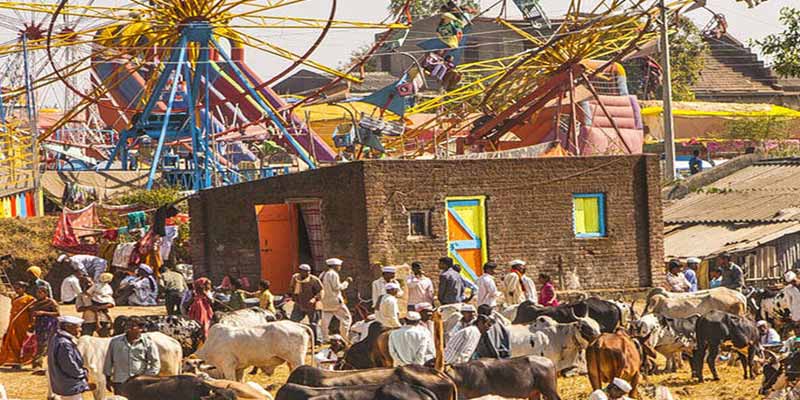
How Chandrabhaga Fair celebrated?
The Chandrabhaga Fair, celebrated with great enthusiasm in Jhalawar, Rajasthan, is a unique blend of spirituality, tradition, and cultural festivities. It usually spans three days during the Kartik Purnima, which falls in October or November according to the Hindu calendar. This annual fair draws pilgrims, tourists, and traders from far and wide, making it a colorful and bustling event.
Religious Significance: The fair’s main highlight is the religious significance it holds. Pilgrims gather at the Chandrabhaga ghats, situated along the banks of the Chandrabhaga River. It’s believed that taking a holy dip in the river on Kartik Purnima purifies one’s soul. Devotees offer prayers and light lamps at the ghats, creating a serene and spiritually charged ambiance.
Cultural Extravaganza: The fair is a vibrant celebration of Rajasthan’s rich culture. Traditional music, dance, and folk performances are showcased, including Kalbelia, a mesmerizing snake-charmer dance, and Ghoomar, a graceful traditional dance form. These performances captivate the audience and provide a glimpse into the state’s artistic heritage.
Crafts and Handlooms: The fair offers a fantastic opportunity to explore Rajasthan’s artistic talents. Local artisans display their craftsmanship, including intricate handwoven textiles, pottery, traditional jewelry, and colorful turbans. It’s a shopping paradise for those interested in purchasing authentic Rajasthani crafts.
Cattle Fair: In addition to the cultural and religious aspects, the Chandrabhaga Fair features a bustling cattle market. Livestock traders and farmers from nearby regions gather to buy and sell cattle, making it an economic hub during the festival. This cattle fair adds a practical and agricultural dimension to the event.
Delicious Cuisine: The fair is a food lover’s delight. Visitors can savor an array of Rajasthani dishes and street food, including dal baati churma, mirchi bada, and various sweets. The culinary experience at the fair is an adventure for the taste buds Chandrabhaga festival Jhalawar.
Fun and Entertainment: The fair also has amusement rides, games, and various forms of entertainment for children and families. This makes it a complete family event, catering to a wide range of interests.
In conclusion, the Chandrabhaga Fair in Jhalawar is a multifaceted celebration that beautifully blends spirituality, tradition, culture, and commerce. It offers a unique opportunity to witness the vibrant tapestry of Rajasthan’s heritage and the coexistence of tradition and modernity in this colorful state.
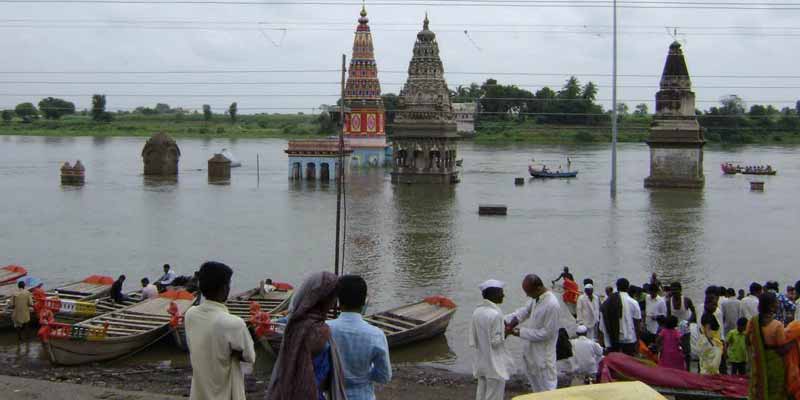
Major Attractions near Chandrabhaga Fair
While attending the Chandrabhaga Fair in Jhalawar, Rajasthan, you can explore several major attractions and points of interest in the surrounding area. Here are some of the top attractions near the Chandrabhaga Fair:
Jhalawar Fort: Jhalawar is home to a historic fort, also known as the Garh Palace, which is an architectural marvel. The fort is a perfect blend of Rajput and Mughal architecture and provides a glimpse into the region’s rich history.
Gagron Fort: Located a short distance from Jhalawar, Gagron Fort is a UNESCO World Heritage Site and a stunning example of medieval Indian architecture. The fort is surrounded by water, making it a unique and picturesque site.
Sun Temple (Padampura): The Sun Temple in Padampura is a beautiful and serene place of worship, known for its intricate architecture and tranquil surroundings. It’s a peaceful spot for those seeking spiritual solace.
Bhawani Natyashala: This historic theater in Jhalawar is a must-visit for art and culture enthusiasts. It was built during the reign of Maharaja Bhawani Singh and is known for its beautiful frescoes and stunning architecture.
Government Museum: Located in Jhalawar, this museum houses a remarkable collection of artifacts, sculptures, and paintings, offering insights into the history and culture of the region.
Chandrashekhar Azad Park: This park is a peaceful oasis in Jhalawar, ideal for a leisurely stroll or a family picnic. The park is named after the renowned Indian freedom fighter, Chandrashekhar Azad.
Kakuni: Kakuni is a small village near Jhalawar known for its ancient temples, step wells, and natural beauty. It’s an excellent place to explore the rural life and heritage of the region.
Brij Vilas Palace: This palace, located in Jhalawar, is known for its magnificent architecture and serves as a heritage hotel today. Even if you’re not staying there, you can admire its grandeur from the outside.
Darrah Wildlife Sanctuary: Located around 50 kilometers from Jhalawar, this sanctuary is a haven for wildlife enthusiasts. It is home to a variety of flora and fauna, making it a great place for nature lovers.
Chandrabhaga Temples: While at the Chandrabhaga Fair, don’t forget to explore the Chandrabhaga Temples along the riverbank. These historic temples offer a glimpse into the religious and architectural heritage of the region Chandrabhaga festival Jhalawar.
These attractions offer a mix of history, culture, spirituality, and natural beauty, providing a well-rounded experience for visitors attending the Chandrabhaga Fair in Jhalawar.


